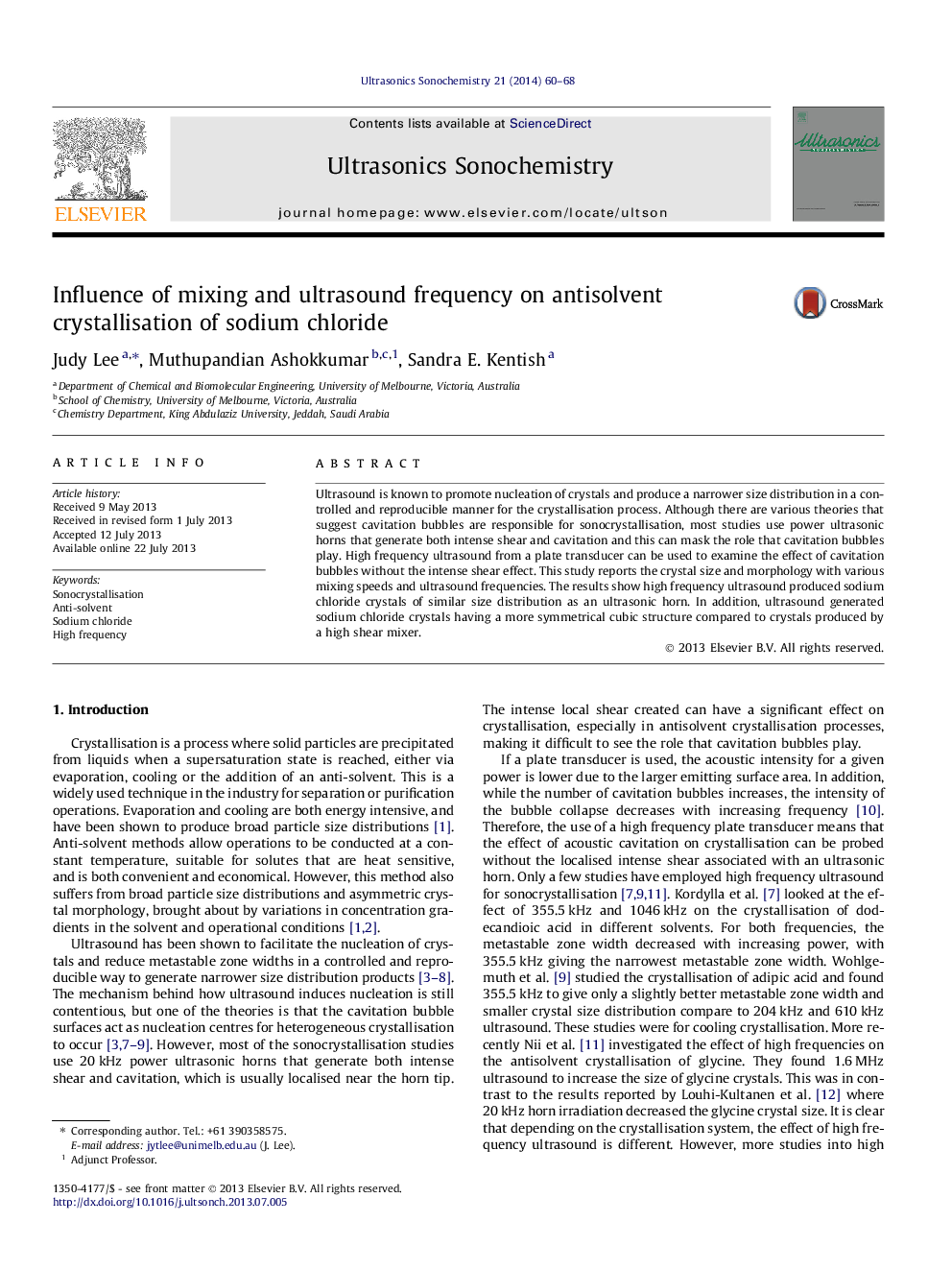| Article ID | Journal | Published Year | Pages | File Type |
|---|---|---|---|---|
| 10566087 | Ultrasonics Sonochemistry | 2014 | 9 Pages |
Abstract
Ultrasound is known to promote nucleation of crystals and produce a narrower size distribution in a controlled and reproducible manner for the crystallisation process. Although there are various theories that suggest cavitation bubbles are responsible for sonocrystallisation, most studies use power ultrasonic horns that generate both intense shear and cavitation and this can mask the role that cavitation bubbles play. High frequency ultrasound from a plate transducer can be used to examine the effect of cavitation bubbles without the intense shear effect. This study reports the crystal size and morphology with various mixing speeds and ultrasound frequencies. The results show high frequency ultrasound produced sodium chloride crystals of similar size distribution as an ultrasonic horn. In addition, ultrasound generated sodium chloride crystals having a more symmetrical cubic structure compared to crystals produced by a high shear mixer.
Related Topics
Physical Sciences and Engineering
Chemistry
Chemistry (General)
Authors
Judy Lee, Muthupandian Ashokkumar, Sandra E. Kentish,
